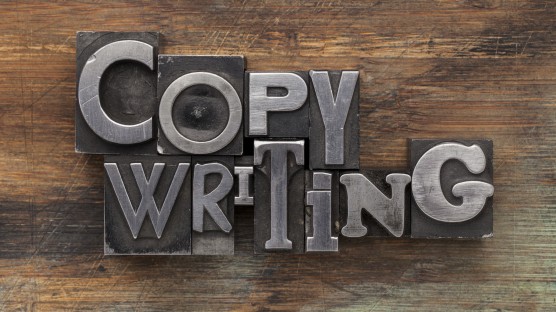5 Steps to Copywriting: Explained

Through positive feedback from our fans and readers, WritePath writes a sequel to the previous topic, 5 Steps to Effective Copywriting: Hidden Power.
Copywriting is the art and science of persuasion; the crafty use of words to move people to take action.
First step- Research and Organization
The best way to get a good idea is to get a lot of ideas.” —Linus Pauling
Through research you'll better understand the target audience's decision making process. By following a systematic approach, you'll be more efficient and will have much of the material needed for copywriting. While not absolutely necessary, it is a good idea to hire a professional. However, any literate person with a good knowledge of the business, product can effectively participate in the 5 step process. In fact, we recommend that every marketing manager be intimately involved in product and services research.
Second Step- Targeting market research
Most of the key information you need is readily available in your files or on the internet. Evaluate your customer database, Facebook, other social media, users and enthusiast blogs. If you have the budget, conduct surveys and questionnaires. It is a good idea to interview customers to better understand their purchasing logic.Write simple statements that summarize research findings in each area (below).
Target Audience
- Who buys
- Why buy
- How, where to buy
- Needs
- Benefits
- Trends
- Fears
Competition
- Who sells
- How do they market
- How do they convert
- Trends in their business
Competition vs You
- Product
- Advantages and uniqueness
- Pricing
- Features
- Benefits
- Ordering
- Warranties and Refunds
References
- Testimonials
- Blogs
- Awards
- Company and product story
- Social Media and other Web
Third Step- Copywriting Basic Techniques and Rules in Copywriting
Voice
Upon review of your research you're pretty much ready to decide upon your writing style and voice and then create content. An intelligent conversational tone in the second person is generally recommended. If you are selling cars, then you want to sound like an engineer, not a gas station attendant. Writing in the second person, while not necessary, is preferred here. The logic is simple, writing in the second person is preferable is because the buyer is the second person. So using you or you're (second person) driven statements tends to sell better than using I and we (first person).
Your tone should distinctive and match your brand image. A voice that is clear, simple and consistent is recommended. Look back on preliminary findings. Think about the approaches that appealed to you. What was the style that your "favorite" competitor used?
Content Creation
Header
“On the average, five times as many people read the headlines as read the body copy.” —David Ogilvy
The header's function is to get the audience in the front door. Once in the door, you can explain the details. Creating a good headline is an art in itself. What to say? The possibilities are endless. Your research will greatly assist you in making a good choice. Once you choose a few one liners, it is a good idea to beta-test them on prospective customers and observe their response.
A good header should:
- Create excitement, interest or passion
- Offer a solution to a problem
- Make a call for action
Article Styles
Choose your article style according to your style, product and service. Commonly effective approaches include.
- Direct
- News
- How-to
- Question
- Command
- Information
- Testimonial
Create Outline
From your research list in logical order the main topics. Then under each major topic, list subtopics. Review your work and make sure to start with the most important issues.
Fourth Step- Create Content
“If you can’t turn yourself into a consumer, you probably shouldn’t be in the advertising business at all.” —Leo Burnett
Now begin to create content by writing simple sentences about topic and subtopic. Reference your material as soon as the ideas don't come. Don't try to be fancy or edit at this point. In one sitting you'll be able to bang out the basics.
Using the chosen voice, morph your simple sentences into an entertaining, interesting or passionate piece about your product. Try and be objective, don't go over the top or on the other hand, don't be too dry. Above all, be clear and to the point. We recommend that bullets and data tables be used to improve scannability whenever possible. Testimonials and quotes from recognized authorities are very powerful and should be used often. When describing the product, be sure to highlight key features and provide easy access to specification details.
Fifth Step- Review and Edit
One day I will find the right words, and they will be simple.” —Jack Kerouac
Be prepared to cruelly and objectively inspect and ditch copy that does not meet the grade. Try to observe from afar.
Run your text through a good grammar and spell check and edit the obvious mistakes. Grammar check programs are seldom perfect, however, consider rewording phrases that appear correct but baffle the program. Most copywriters fine tune the headline as a last step because they better informed about the product and consumer. Often the phrase in question can be reworded for better effect. With the content fresh in your head, the final editing can begin.
Review the following checklist and revise.
Checklist
- Is the header captivating?
- Is there a call for action?
- Is the #1 benefit presented at first glance?
- Is a solution provided an audience problem?
- Is the voice consistent?
- Is the vocabulary consistent with the voice and topic?
- Does the content flow?
- Is there ineffective redundancy?
- Are there low impact statements?
- Can phrases be simplified?
- Do you back-up grand statements?
- Can you better use testimonials?
- Is trust established?
- Do statements remind you of friend?
















